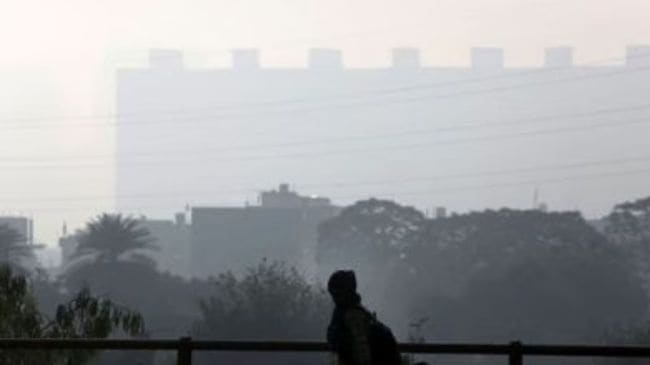Opinion Indian cities need a plan
They must be challenged to transform into world-class destinations by learning from Singapore’s structured urbanisation
 Indian cities face a severe pollution crisis which is threatening public health and economic growth.
Indian cities face a severe pollution crisis which is threatening public health and economic growth. Every winter, Delhi’s air turns hazardous at worst and unhealthy at best. Not just in the capital; pollution has become a national issue. Our cities are amongst the most polluted in the world. This is also not just about pollution. Indian cities struggle with climate change, poor infrastructure, and weak public services. By 2036, more than 600 million people will live in Indian cities — our cities are not ready for this growth. Roads are overcrowded, pollution is worsening and essential services like water and sanitation are failing. Our cities are becoming unsafe and unliveable.
Indian cities have immense potential but struggle to match global destinations like Bangkok, London, Dubai, and Singapore. Bangkok thrives on its efficient metro, vibrant street life, and tourist-friendly policies. London offers seamless public transport, green spaces, and cultural hubs. Dubai attracts business with world-class urban planning and investment incentives; Singapore leads in clean governance and smart city initiatives. To compete, Indian cities need bold urban reforms and world-class infrastructure.
Last year, Mumbai and Bengaluru witnessed flooding and waterlogging, disrupting everyday life and displacing thousands. New Delhi and the rest of North India endured a heatwave with temperatures touching close to 50 degrees Celsius. These led to several heat-related illnesses and fatalities. These are a few examples of why our cities must integrate climate-resilient planning. Putting in place green infrastructure like parks and green roofs can help alleviate heat levels while investing in modern drainage and flood management systems to mitigate the effects of heavy rainfall. Strengthening early warning systems and community preparedness can save lives.
Indian cities face a severe pollution crisis which is threatening public health and economic growth. In addition to air pollution, water and waste mismanagement impact millions daily. Forty-two towns rank among the top 50 for air pollution, with nearly 50 per cent of 603 rivers polluted and less than one-fifth of waste treated. Vehicle emissions, industrial discharge and construction dust contribute to respiratory diseases and other health issues. The Clean Air Fund estimates that air pollution costs India almost $95 billion annually in lost productivity and healthcare expenses.
Water pollution is also critical. Major rivers like the Yamuna and Ganga are heavily contaminated, making them unsafe for consumption and harmful for marine biodiversity. In Bengaluru, lakes have either dried up or become toxic while floods in Chennai have worsened groundwater contamination, leading to a cutoff of clean water supply for many communities. The lack of waste management, or mismanagement, adds to the pollution pressures. Overflowing landfills emit hazardous methane. Informal waste collection and lack of garbage disposal mechanisms allow pests and diseases to thrive. Our cities need comprehensive strategies to combat air, water, and waste pollution.
In India, a census town is a settlement that, while not officially designated as an urban area, exhibits all the characteristics of it. According to the 2011 Census, census towns increased from 1,362 in 2001 to 3,894 in 2011, contributing to nearly one-third of the urban growth during that decade. While this proliferation indicates rapid urbanisation, it also presents significant challenges. Census towns continue to be governed as rural areas, lacking the capacity and resources to manage urban infrastructure and services. This governance mismatch leads to inadequate urban planning, insufficient public services, and haphazard development. Moreover, the absence of formal urban status means these towns do not receive appropriate funding from urban development schemes. Their delayed recognition and integration into formal urban governance structures impede their development and exacerbate regional disparities.
Transforming our cities will require an overhaul of planning, strengthened governance, and sustainable financing. With action on these fronts, India can develop liveable, resilient, and economically vibrant cities that can become global attractions. The first step must be to notify these census towns as urban areas in their own right. States must take the lead.
In the 1960s, Singapore faced overcrowding, slums, traffic congestion, environmental pollution, floods, and water shortages. To address these issues, the government implemented a comprehensive urban development strategy focused on efficient land use, robust infrastructure, and sustainable growth. Singapore’s urbanisation journey offers valuable insights for India.
In the Union Budget for 2025-26, the Indian government announced the establishment of a Rs 1 lakh crore Urban Challenge Fund. This fund will implement initiatives in areas such as Cities as Growth Hubs, Creative Redevelopment of Cities, and Water and Sanitation. Indian cities must be challenged to transform into world-class destinations by learning from Singapore’s structured urbanisation. The Fund can incentivise cities to adopt long-term planning, invest in mass transit, and enhance sustainability. Singapore’s success lies in affordable housing, green urban spaces, and efficient governance — lessons India must embrace. A city-level grand challenge to clean our cities can be one aspect of this Fund. Cities should be judged on how well they tackle air and water pollution. The parameters could include electrification of transport, controlling emissions, waste management practices, and construction management practices to control air pollution.
Our cities are grappling with overcrowding, pollution, and poor health, but these are not insurmountable challenges. The time for change is now, and the next decade will determine the fate of our cities. They can become smart, green, and liveable or succumb to pollution, congestion, and insecurity.
Kant is India’s G20 Sherpa and Nagairach is senior policy specialist, Office of G20 Sherpa. Views are personal




